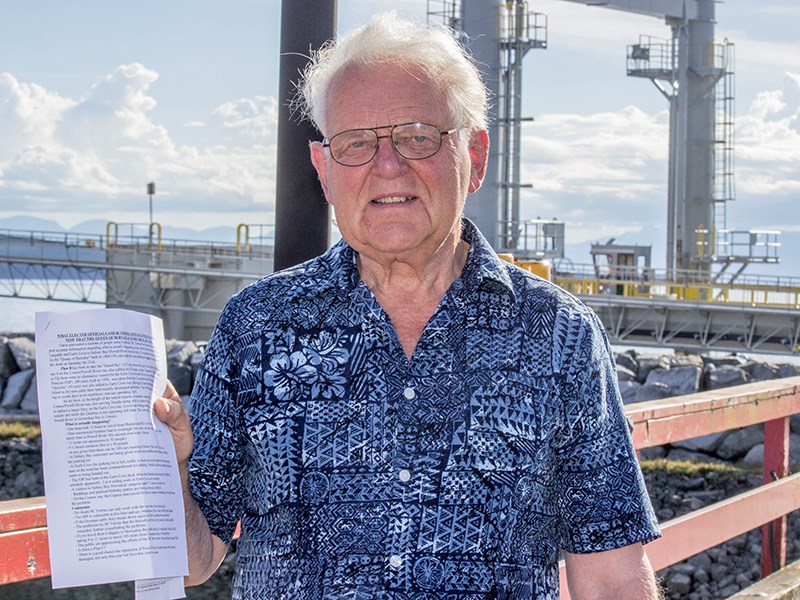It was a weekend of long ferry waits and mounting frustration for travellers needing to get to or from Powell River via Saltery Bay.
Ferries that normally serve Powell River routes were jostled to cover for the Queen of Burnaby, which went out of service for unexpected repairs on Saturday, July 23.
MV Island Sky stood in for the Burnaby on the Comox-Powell River route while BC Ferries moved two smaller vessels over to cover the Jervis Inlet run between Saltery Bay and Earls Cove.
“We know it’s not ideal and we really appreciate that it’s frustrating for people, but our crews are trying their best,” said BC Ferries manager of public affairs Darin Guenette about reports of lengthy waits.
Powell River Regional District Electoral Area C director Colin Palmer said on Monday, July 25, he had lost count of the number of people, Powell River residents and out-of-town travellers, who had been affected by the service disruption.
In a letter prepared for premier Christy Clark and minister of transportation Todd Stone, Palmer said he spoke to one man who spent 14 hours travelling from Richmond to Powell River.
The trip from Horseshoe Bay took between nine to 11 hours on average for most travellers, he said. Normal travelling time for the trip is approximately five hours.
Palmer estimated that at any given time during the weekend approximately 100 vehicles were inside the ferry terminal parking lot or lined up along the highway at Saltery Bay. About 150 more filled the lot at Earls Cove and a line of cars stretched up to the Egmont turnoff at one point, he said.
Northern Sunshine Coast Ferry Advisory Committee chair Kim Barton-Bridges was also talking to the public affected by the modified schedule and trying to direct people to the BC Ferries customer service line.
Barton-Bridges said she feels the picture BC Ferries painted about the ability of the two smaller ships to handle Saltery Bay to Earls Cove traffic was exaggerated.
“We envisioned two small but mighty vessels just going back and forth all day,” she said. “That’s not what happened.”
Barton-Bridges said her plan is to share all the stories she collected about how people were affected with BC Ferries board and administration members, as well as with Stone. She said she thinks a fundamental change to how the ferries operate is in order.
“BC Ferries is contracted to do what they do, but they are just a service provider and they don’t consider the socioeconomic impacts of their service,” she said. “The ministry has to step in and talk with them about how this is not working.”
Guenette said BC Ferries has done what it can in the face of circumstances beyond its control.
“We’re trying to make the best out of a bad situation,” said Guenette. “When something breaks in peak season, we don’t have spare vessels.”
Palmer said most people did not blame the ferry crews for the waits and added that the situation is “many chickens coming home to roost.”
Palmer holds the provincial government responsible for underfunding vessel replacements and general neglect of BC Ferries.
Queen of Burnaby needed to be taken out of service to repair the oil leak in its propellor hub, but replacement vehicles are not a realistic solution, said Guenette.
“If you had vessels laying around just in case, it would be ridiculously expensive,” said Guenette. “We can’t have those kind of costs.”
At the height of summer travel, the 39-year-old MV Quinitsa and 58-year-old MV North Island Princess, both with 50-car capacities, were brought in to cover for the Island Sky and its 125-car capacity.
Running at full capacity, the North Island Princess for 16 hours per day and Quinitsa for eight, the two ships could not keep up with the demand.
Barton-Bridges said residents of Powell River have no other option but to continue to use the service. Powell River’s summer tourists are a different story, she said.
“For people who don’t have to come back here, what are the chances they are going to come back?” said Barton-Bridges.
Palmer said Powell River’s tourism sector has likely been “severely damaged, not only this year, but for a few more to come.”



